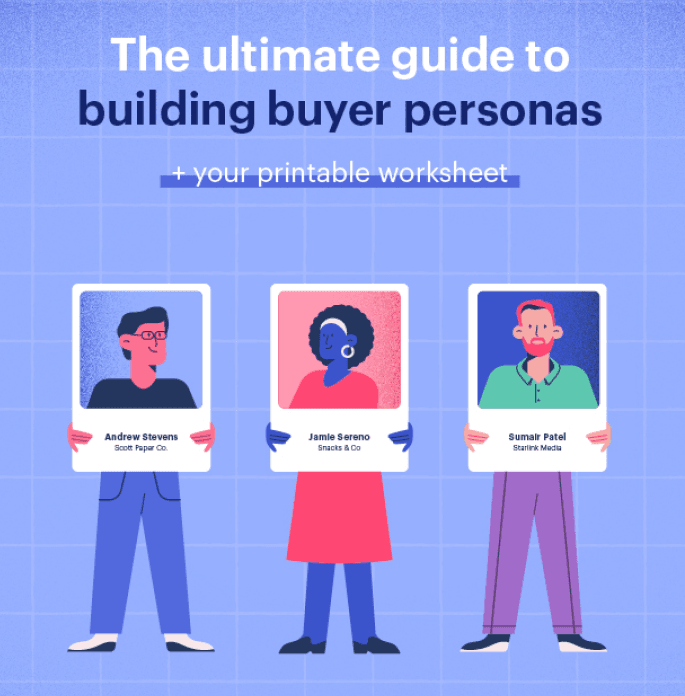
Katrina Oko-Odoi
Sr. Content Marketing Manager
Whether you work with a handful of clients or you have hundreds or thousands of customers on your books, your business needs customers to thrive.
Of course, not everyone is going to be a fit for your offerings, and that’s why customer research is so critical.
When you understand your target customers, you can:
- Create better content that your customers will love
- Pursue the best leads for your business
- Save time by narrowing your focus
- Convert more leads into happy customers
- Retain customers for the long haul
Have you ever wondered what your target customers were thinking? Well, put your detective hat on, because we’re going to dig up some clues about your target audience.
Follow these 4 steps to conduct accurate customer research and start refining your growth initiatives.
Step 1: Understand your current customers
Maybe you want to sell to billionaires, but if you aren’t currently selling to that type of buyer, building a customer persona around them won’t be very effective.
Dreaming big is okay, but for your ideal customer profiles, it’s better to stay grounded and start where you are.
Do a little recon on your existing customers. First, identify your top customers. If you have a large customer base, try to compile information on 100 customers — but if you’re a smaller shop, 5-10 is okay, too.
Gathering this info is the most time-consuming part of customer research, but it’s a lot easier if you’re using a CRM like Copper. Use your CRM to find your best customers by:
- Revenue
- Contract length
- Company size
… or any other parameter you like. The goal is to find the best customers who you love working with.
After analyzing your top customers, you’ll start to notice patterns or similarities shared between your fave clients.
Step 2: Create customer personas
Customer personas are an absolute must to not only get a better understanding of your audience, but to automate relationship building at scale.
The best customer personas are based on customer research, so identify the patterns you found in step 1 and clean them up a bit.
Who’s a decision-maker? What traits make a lead an ideal customer for your business? At a minimum, you can create separate customer personas with data like:
- Job title
- Industry
- Average budget
- Content preferences
It might sound a little cheesy, but it’s a good idea to give each customer profile a nickname, too. Sure, a name like “Software Savant” might feel silly, but it gives your team an easy way to quickly reference your ideal customer profile.
Again, make sure these personas are rooted in real life. It’s always better to target the customers who have proven that they’re interested instead of going after a pie-in-the-sky target.
Ask your business partner or employees to review the customer personas you’ve come up with. Sales and marketing staff will have insights, but don’t overlook the folks in customer service or IT as they often provide a helpful understanding of the customer experience.

Free resource
The ultimate guide to building buyer personas + worksheet
Target smarter by uncovering your company’s ideal customer personas.
Step 3: Map the personas to your CRM
If you’re wondering how to put all of this valuable customer data to use, look no further than a CRM — letting you easily reference your research in every customer interaction.
Don’t let your customer profiles languish in your Google Drive. Instead, plug them into a CRM like Copper to put your personas to work for your business.
Every CRM is different, but Copper allows you to categorize every lead into different buckets, according to their persona. Just use a Custom Field and give your sales team a dropdown option listing your different personas. You can do this manually when you enter someone into the CRM for the first time, or you can set up Copper to automatically assign personas based on each lead’s job title.
This categorization might sound like an extra step, but it’s actually critical. By categorizing leads into different personas, you’re putting your customer research to work to help you:
- Keep your list clean
- Personalize emails
- Send the right content to the right lead, at the right time
- Touch base with leads when they want to hear from you
Step 4: Update your personas regularly
Buyer personas only work if you revisit them frequently. As your business evolves, so will your customer base — and your buyer personas need to be tweaked to ensure they're still an accurate representation of your current customers. We recommend updating your personas at least every 6 months.
It’s time to build your own buyer personas
Customer research is a must for businesses of any size. Whether you’re a solopreneur or a small-to-medium-size business with 100 employees, you’ll benefit from understanding the people who pay for your services.
You’re here to serve your customers, after all. The best way to keep them grinning at every turn is to know everything you can about them. But this means going beyond factoids like age and demographics and looking at their real needs instead.
Start getting to know the people you’re serving. Download our free Buyer personas guide and worksheet here.






